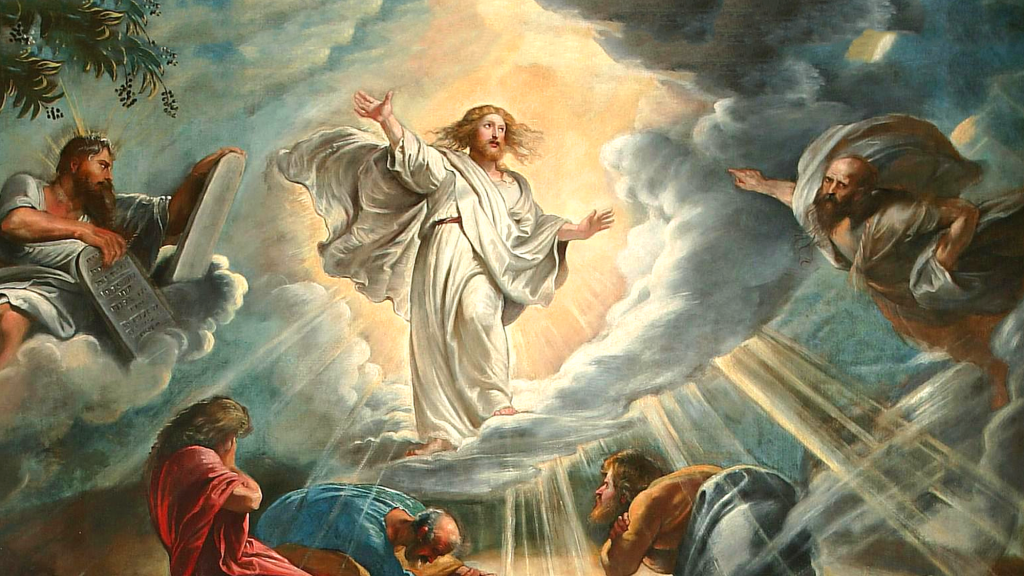Recognizing Moses and Elijah

The incident which occurred on the mountain which we call the Mount of Transfiguration was recorded by Matthew (in chapter 17), Mark (in chapter 9), and Luke (also in his 9th chapter). This blog post revisits that event, and attempts to answer one very important question which was recently asked by a college student: “how did the apostles recognize Moses and Elisha?” While the Bible does not exactly answer that question specifically, it is worth revisiting the text for clues.
In this event, Jesus takes Peter, James, and John up to a mountaintop with Him. Jesus become very bright, and two bright figures appear with Him. Peter, James, and John recognize them as Moses and Elisha. Peter proposes building three tabernacles there, one for each of them. Jesus rejects their proposal. It is worth noting that many early church fathers thought that these two were chosen to represent the law (Moses) and the prophets (Elijah).
While again, the way that Peter, James, and John recognized them is not something the Bible speaks directly about, there are several schools of thought that are supported:
- God revealed it directly to the Apostles. This school of thought proposes that nothing is impossible with God (Matthew 19:26, Luke 1:37, and others).
- The apostles recognized them. They are described in the Old Testament. There were statues of them existing at the time. They may even have had props like a flaming chariot or tablets of stone, the early equivalent of “name tags.”
- God stated it explicitly. A voice from heaven was clearly heard (Matthew 17:5, II Peter 1:17). We know that the voice later said the very same words God said at Jesus baptism. The reasoning here is that we just don’t have everything recorded for us by scripture.
- The apostles overheard Jesus using their names when He talked with them. Before there is any hint of identification, Moses and Elijah were talking with Jesus (Matthew 17:3). If Jesus used their names, the apostles could have heard this.
Since we do not have any direct evidence, it is impossible to say which approach is correct. However, we personally believe some combination of explanation two and explanation four is the most likely. We believe it is probable that the apostles had a strong inkling of who they were, and Jesus’ words just confirmed it.
On a separate note, it is interesting to us that Mark’s account records that when Peter proposes building the three tabernacles, he did not know what he was saying. (Mark 9:33) Some have even suggested that this meant the apostles did not even recognize the men. We reject this conclusion, since Peter specifically mentions Moses and Elijah in this request. The idea that this would be a “lucky guess” is too much for us. We think the fact that Mark records the fact that he does not know what he is saying indicates that Peter does not know how to react and proposes building tabernacles without giving it much thought.
While the answer is not specifically addressed in the Bible, the clues are there. The study through the Bible always reveals details worth thinking about. Two thousand years have not minimized the good questions that come up, and the worthwhile study such questions entail.
Thank you! Can you tell us more about the statues of Moses and Elijah existing at the time, and how accurate they may have been in portraying them?
Sadly, most of the Christian art from this era (both statues and paintings) no longer survive, so what we know is limited to a combination of descriptions and the art that survives from the second and third centuries (and even later) which presumably copied or borrowed heavily from that work. While Moses appears both with and without a beard, the representations of him are fairly consistent in form. Also, they almost always involve him with tablets representing him as the lawgiver. The art which depicts Elijah is even more consistent aesthetically. I personally have not found any artistic renderings of Elijah without a beard or without his famous cloak (which as you will recall he left behind when for Elisha when he was taken up by the chariot of fire). Interestingly enough, though, Elisha is rarely portrayed. Art which depicts the transfiguration event almost all seem to include these “props,” Moses with his tablets, and Elijah with his cloak. Whether this represents an attempt to make these people recognizable to the viewer of the art, or speculation about how they were recognized, is up for debate.